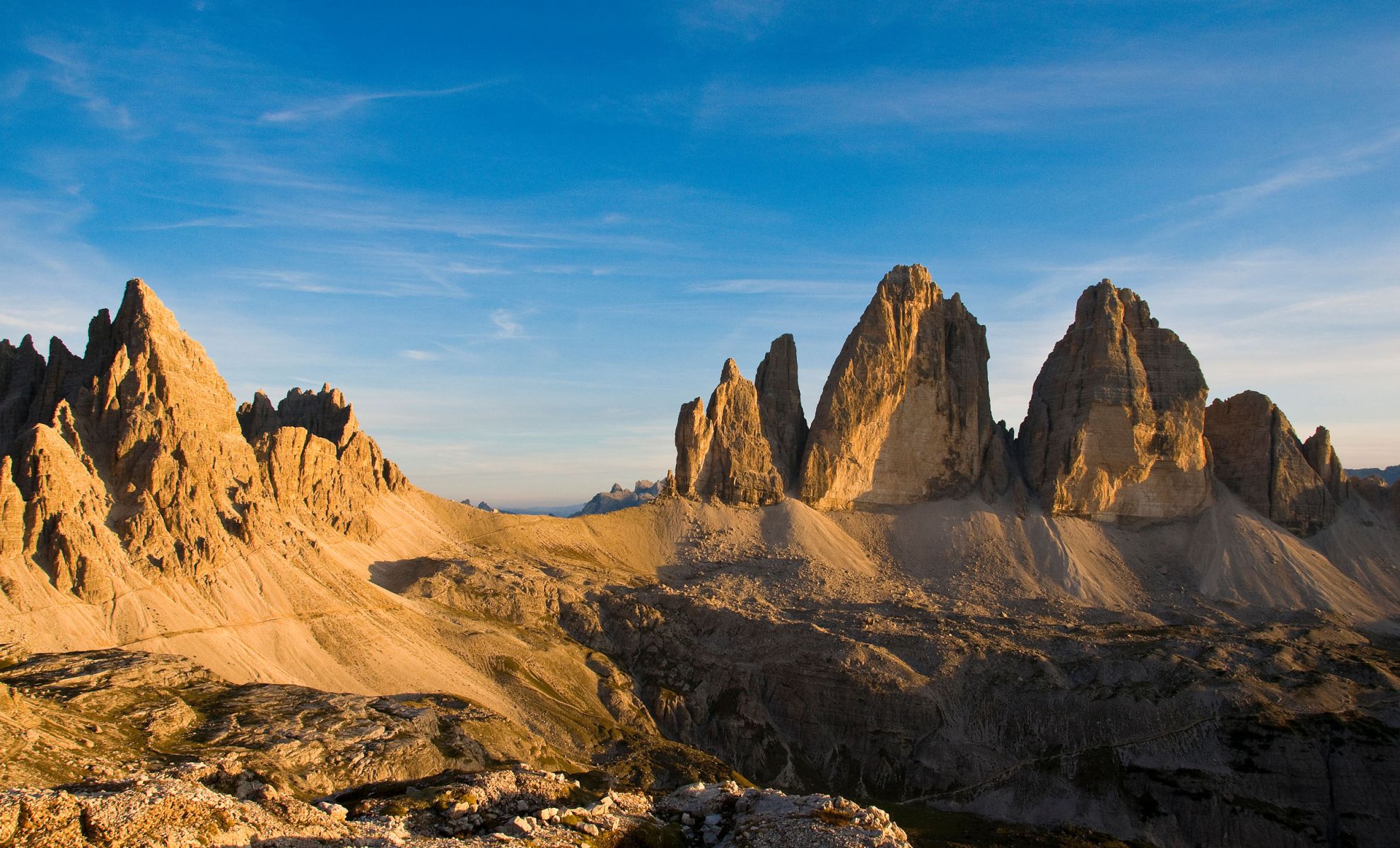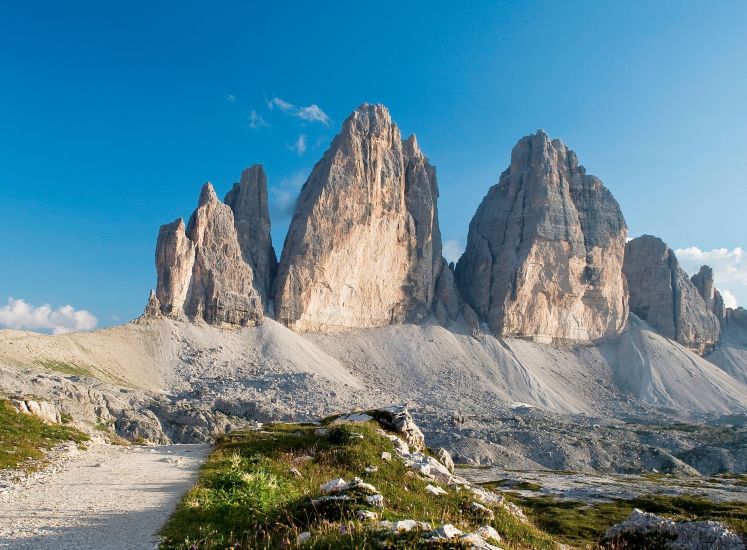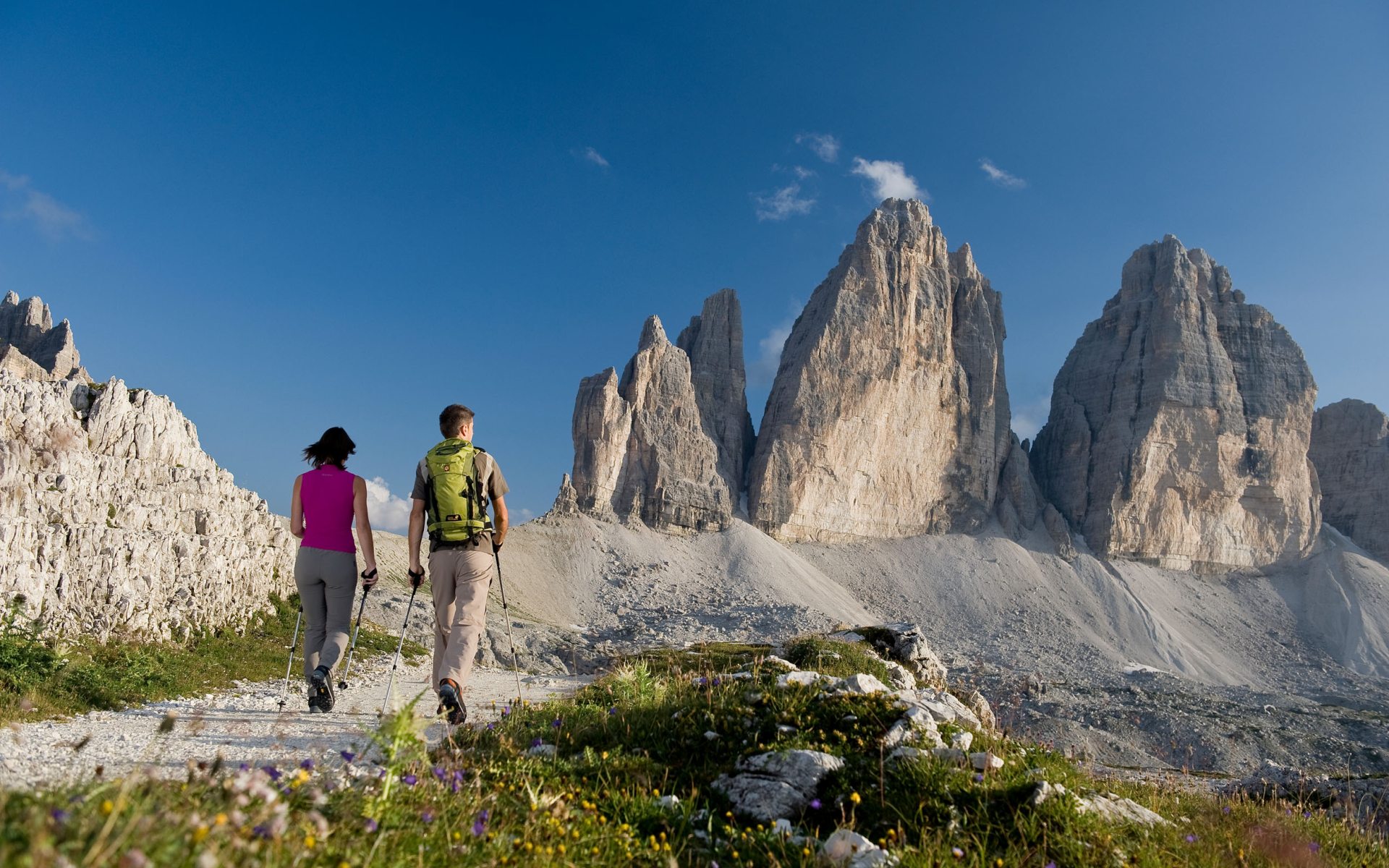The Italian Dolomiti Alps, a natural heritage of humanity
The land of the Three Peaks - probably the most beautiful mountains in the world
On June 26, 2009, the news became official: the Italian Dolomiti Alps, once defined by legendary mountain climber Reinhold Messner as “the most beautiful mountains on earth”, were proclaimed a natural heritage of humanity by UNESCO. Although only a part of the Dolomiti Alps lies in Alto Adige, the Region holds as many as six of the nine mountain chains: the Fanes-Sennes-Braies Nataural Park, the Dolomiti di Sesto chain, the Puez-Odle, the Sciliar-Catinaccio Groups, the Sella massif, and Bletterbach Canyon.
The Dolomiti Alps have always amazed visitors with the beauty of their landscape and the variety of their geology. Despite the fact that the Dolomiti Alps are now one of the most popular destinations for mountain climbers, they were surprisingly “discovered” by researchers, the first of whom was the man who learned the particularity of the rock and gave the mountains their name: Deodat de Dolomieu.
All those who reach Alto Adige through the Brenner Pass or the Resia Pass will clearly notice the contrast between the Dolomiti Alps and the previous alpine scenery: the pale peaks, the soaring heights, and the steep, eroded walls with rubble at their feet rise over wooded crests. It’s always a thrill to watch the glittering white Dolomiti rock turn pink with the sunset, and very few indeed resist the romanticism inspired by this enchanting marvel of nature.
To admire this UNESCO natural heritage of humanity also means living the life of the Dolomiti Alps!








